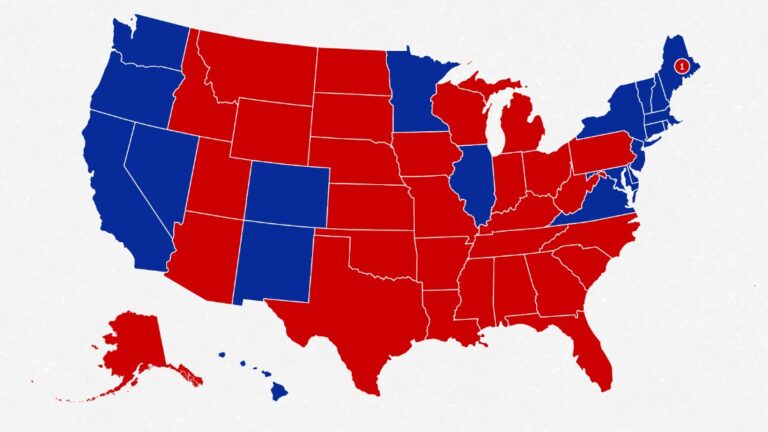(CNN) Conventional wisdom dictates that the way for Democrats to win the White House in November is to win back three Rust Belt states that Donald Trump wrested from them in 2016: Michigan, Pennsylvania and Wisconsin.
But what if this CW is wrong? (Somewhat conventional wisdom — including me! — was wrong about Trump's chances of winning in 2016). What if the Midwest isn't the central battleground of the 2020 election?
That's the argument Doug Sosnick, a longtime Democratic consultant, makes in a new memo outlining the political landscape ahead of the fall campaign. (You can read the full note here.)
Sosnik writes:
“It's generally accepted that Trump's victories in the Rust Belt states of Michigan, Pennsylvania, and Wisconsin gave him the presidency in 2016. So it makes sense that many political pundits are squarely focused on this path to a Biden victory in 2020. fact is that it's not Biden's easiest path to the White House.”
So what is it? According to Sosnik, a combination of winning one (or two) of that trio of Rust Belt states coupled with an increased focus on the Southwest and South — areas that are clearly moving in the Democratic direction demographically and otherwise.
And at the top of that list is Arizona, which Sosnick describes as “the state most likely to shift to a Democratic base state as early as November.”
Why; Due to the growing Hispanic voting-age population combined with significant increases in turnout in the same group. (Hispanic participation increased 25% between 2014 and 2018, according to Sosnik's calculations.)
These changes led to significant gains for Democrats in the state. Sen. Kyrsten Sinema snapped a 30-year losing streak for Democrats in state Senate races when she won in 2018. And Democrat Mark Kelly leads Republican Sen. Martha McSally in nearly every poll in that race.
Sosnik believes Joe Biden's best path to 270 electoral votes is to win Michigan, Pennsylvania and Arizona (not Wisconsin), which would allow the former vice president to lose Florida, Ohio, Texas, North Carolina, Georgia and Iowa and win by 279 electoral votes.
Beyond the upcoming 2020 election, what Sosnik sees is a fundamental reshuffling of the Electoral College map, with the Midwest moving slightly more Republican even as the South and Southwest move much more heavily Democratic.
“The 2020 election will usher in a new era in presidential politics with a growing number of states like Arizona and North Carolina becoming the political battlegrounds of American politics,” Sosnik concludes. “The Biden campaign's strategy should be focused on this new political map in our country, not on re-fighting the 2016 election.”
The point: Yes, Sosnik is a Democrat who wants to see Biden win. But his suggestion of how to do this more easily is an interesting analysis of the ways in which the current electoral map may be changing (or may already have changed) without many political types — in both parties — realizing it.

